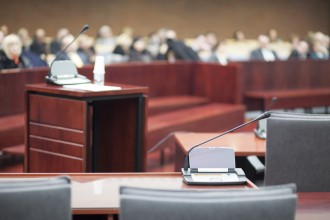December 24, 2019
Glenn Forbis Talks to Bloomberg Law about Secondary Considerations in Patent Litigation after Fox v. SRAM
Metro Detroit patent litigator Glenn Forbis spoke to Matt Bultman of Bloomberg Law about the significance of the Federal Circuit’s ruling in Fox Factory, Inc. v. SRAM, LLC.
The technology in question involves a bicycle chainring, or the toothed disk that connects to the crankarms and then to the pedals. The Patent Trial and Appeal Board ruled that Fox had not shown that the challenged claims were obvious, but the Federal Circuit vacated that decision and held that the PTAB used an improper standard for evaluating secondary considerations.
Secondary considerations are one category of evidence that are considered when assessing obviousness. They include factors such as commercial success, fulfilling a long-standing need, general skepticism from experts, failure of others, or praise from others, among a handful of others.
Companies relying on arguments based on commercial success have typically faced an uphill battle — and the ruling in this case is expected to make the slopes even steeper. The essential problem is that it is difficult for patent owners to prove that one patented feature is responsible for the success of an entire product. For any such evidence to be taken seriously, one must first demonstrate the connection, or nexus, between the two.
“It’s hard to prove the nexus to begin with. If you’re able to rely upon the presumption, it makes a huge difference,” said Forbis, referring to situations where certain products evoke a presumption of nexus. These situations provide a considerable advantage to patent owners.
The Federal Circuit, however, held there can only be a presumption of nexus when the product is “essentially the claimed invention.” SRAM’s acknowledgment during trial that its chainring technology had important but unclaimed features therefore proved detrimental to its argument against obviousness.
The court did concede that a perfect nexus will be rare, although a presumption could still occur if the unclaimed features are “insignificant.” Deciding what is significant and what is insignificant will of course be a major point of future litigation.
“It’s going to be very muddy in other cases,” said Forbis.
For now, patent owners involved in obviousness challenges will need to fine-tune the narrative connecting their patent to its commercial success as well as downplay the significance of other unclaimed elements.
…


